Peking University, Feb. 23, 2014: The youngest branch of PKU’s general service tree is dedicated to the daily groundwork–or, the role of “feet” of the “to-be-first-class” university.
“What matters most for us is to constantly make perfect of our skills and techniques, to keep a steady functioning of facilities supplying utilities,” said Li Zhong, director of the Facility Control Center.
Li got this post when the Office of General Services decided last year to merge two of its subordinate units, the former Heating Center and Water & Power Center. To guarantee the accessibility of water, electricity and heat all along the 8,760 hours of a year, the newly-founded Facility Control Center is responsible respectively for a “smooth and ready” functioning of the following facilities:
35,000-meter-long water-supply lines, 45,000-meter-long sewers, and more than 8,000-meter-long rainwater pipelines;
One 110kV substation, nine switching stations, more than thirty 10kV power distribution rooms, more than ten box-type and more than 100 distribution transformers;
76,000-meter-long heating pipelines and twenty heat-exchange stations, which provide heat in winter for more than 2 million square meters’ living space all around the Yanyuan Campus.
What’s more, the associated chores–facility maintenance, fee charging, property management [like bathroom operation]–are all in the control. Even when the campus is flooded with rain in summer, Li Zhong’s colleagues are also on the front line.
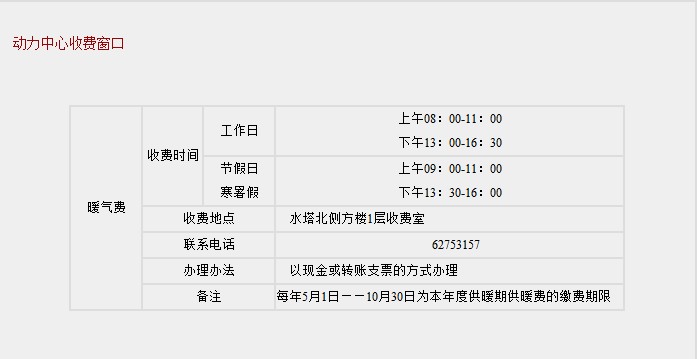
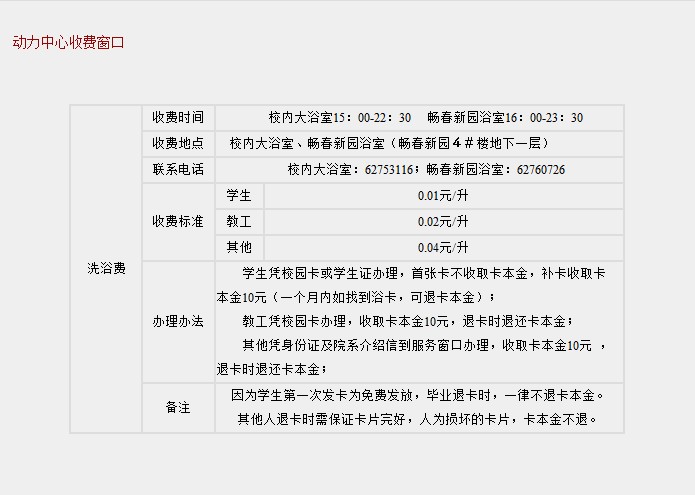
The complicated business of fee charging–a fraction of the Center’s tasks
“The Center is a public institution of the Univ., not a for-profit,” Li Zhong expressed his determination to serve “heart and soul.”
To better its service, the Center established four channels for communication with its clients—thousands of PKU staffs and students. The most convenient is a set of 24-hour repair service hotline, which could help it get timely trouble reports, and make timely solutions.
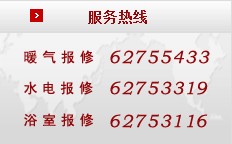
The Center’s three telephone numbers for repair services [planned to be combined in 2014]
At bdwm.net, the University’s popular-in-youngster online community, a representative of the Center runs the official account ‘DLZX’ to give responses to related concerns. Similarly, Director Li himself might read more collective sentiment on the Center from some “internal references” that he receives regularly.
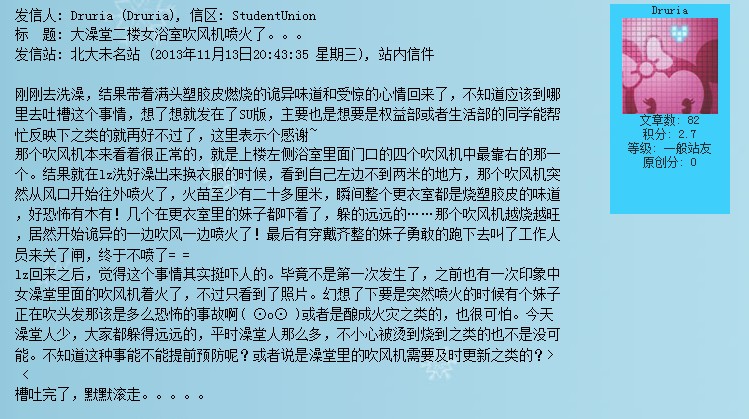
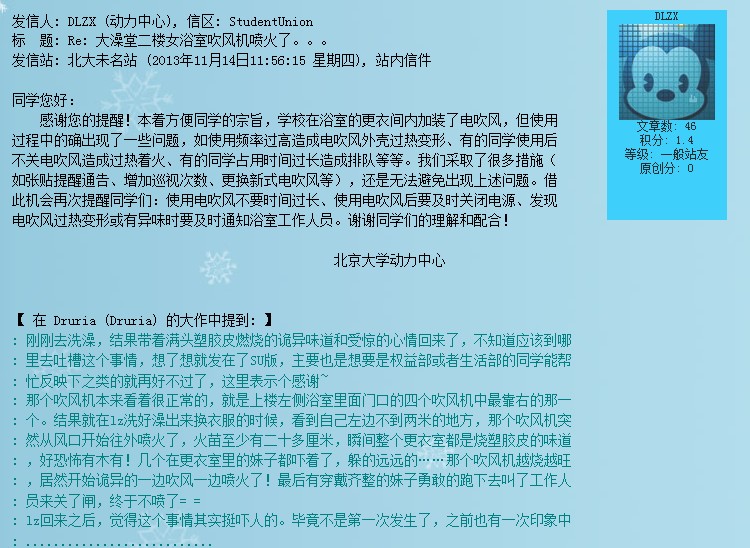
Within a day of an online complain, ‘DLZX’ posted its suggestions.
The latest channel, Li introduced, is a public mailbox on the Center’s new website. In this way, the opinions of staff and students could reach him himself in real time.
“On every reported problem, the Facility Control Center will response and react.”
“As to the problem we can’t solve at once, we would explain to the clients, and ask for joint help from other departments—instead of shirking our responsibilities and passing it over.”
A typical focus is on the huge heating system. People–with different physical characteristics–at different corners of the system–feel different temperatures, either a bit too hot or too cold–and they complain. Consequently, the Center staff would adjust the heating temperature under related national regulations to meet the satisfaction of as many as possible. Usually as well, they have to rush into a student dormitory building, knock a door and another, convincing the upset students with a thermometer.
Due to the congenital deficiencies of PKU’s general service system, there are always many emergencies as such about facilities supplying water, electricity or heat. By solving them one by one these years, the emergency repair team has been certified [according to the industry standard] with professional stills and extensive experience.
The Center itself has also completed its contingency plans and management system, in order to “diminish the influences on teaching, researching and studying to the least.”
However, Li never settles for that “sense of existence.”
“If one day staff and students ‘forget’ such a Center [with no fault, and no longer to be blamed], we then can really call our service ‘perfect’.”
Written by: Hu Beibei
Edited by: Arthars
Source: PKU Youth Studies